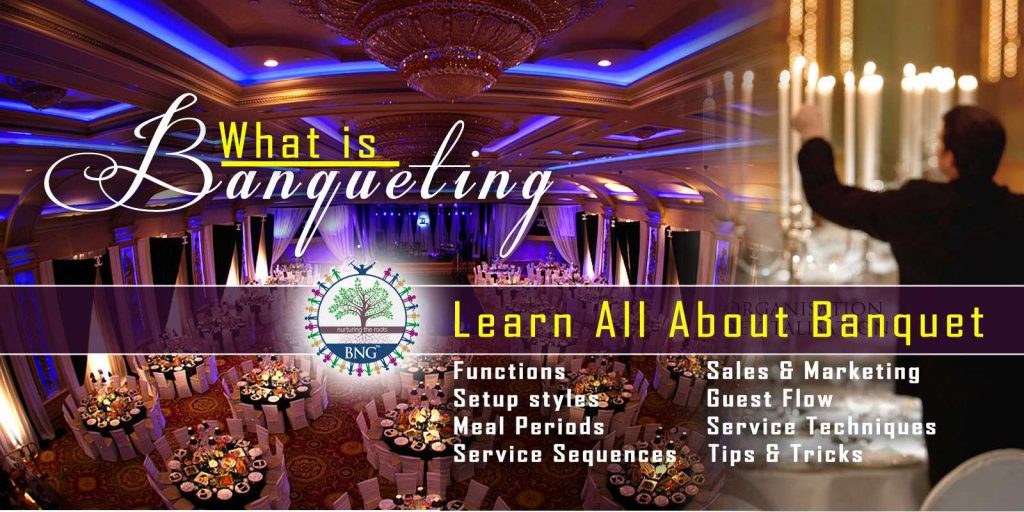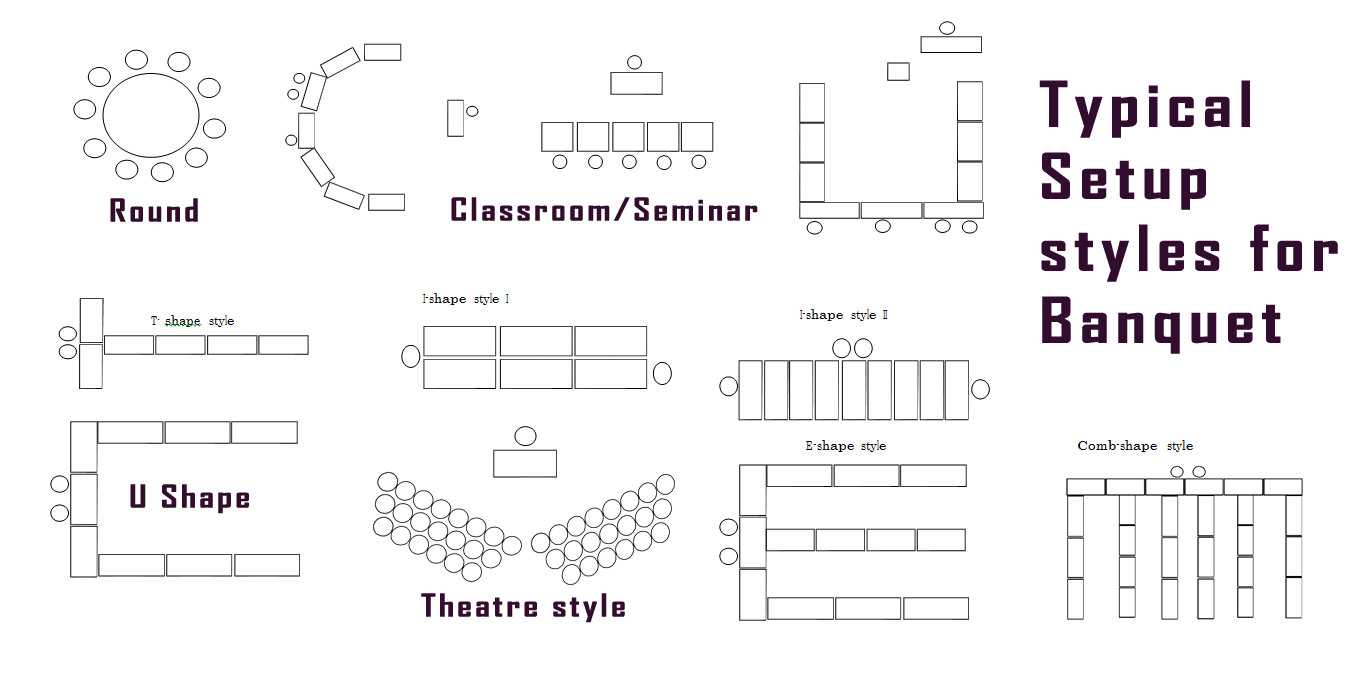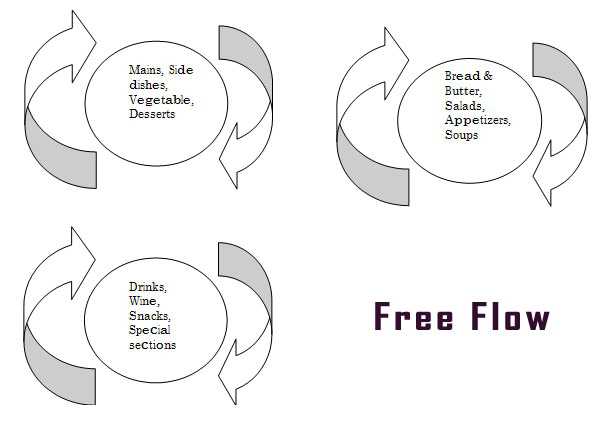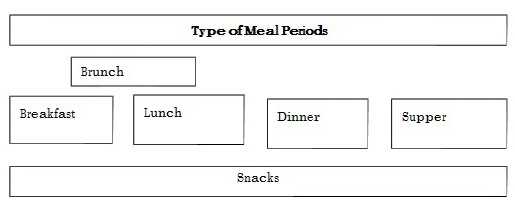What is a Banquet ?
Banqueting is the term used to describe the service of special functions in an establishment [ Banquet ] which is separated from the normal dining or service area found in the various restaurants within the Hospitality sector, meaning a service of special functions for a specific group of people at specific times where food and beverages are pre-selected or determined.
Functions take place within banquet rooms (or outdoors, i.e.: caterings) and are under the supervision and responsibilities of the F&B Department and its Head, the overall responsibility though has the Hotel Manager or Assistant Manager. The Banqueting Manager has the administrative control of all functions (applies to larger Hotels/Resorts).
Banquet rooms consist of the actual function room and may also feature pre-function areas for registration or coffee breaks etc. Banquet rooms are suitable for both business and leisure groups to hold; meetings, seminars, balls, weddings, anniversaries, etc.
Banquets can be very profitable. In addition, successful banquets have an impact on the property’s community relations and can influence the number of rooms it sells to corporate accounts.
Banqueting allows great flexibility in pricing. High-volume food preparation assists to save money and can reduce food and beverage cost. Moreover, food can be purchased on an “as needed” basis; therefore, excessive funds are not tied up in the inventory.
Beverage income also adds to the profitability of banquet sales. Contribution margins (beverage income minus beverage costs) for beverage service can have a significant impact on the Department’s profits.
Production forecasting and planning are relatively easy in serving a pre-established number of guest.
Categorization of Banquet Functions
There is no setup rule for banquet setting except for ceremonies of State, Military or Royal functions according to a protocol.
Setup must be functional in order to serve its purpose. The Banquet Manager/Supervisor etc. is responsible for drawing-up the layout plan such as table plans, buffet lines, service stations etc, according to the instruction given/listed on the ‘Function Order’.
Typical Banquet Setup styles
Classroom/Seminar style for Business Events
- PR Functions (Press release, Fashion, Dealer’s Meeting, Seminars, Exhibitions)
- Conferences (Political, Trade Union, National Sales, International, etc)
- Internal or External Briefings
Classroom/Seminar setup, important points:
- – Overhead projector/LCD projector table may be used for classroom setups.
- – 3-5 people per classroom/seminar table.
- – Each seating has a pencil, a note pad and a water glass plus coaster set in front of it.
- – 2 ½ feet spacing between tables.
Round Tales for Formal, Social or Business Events
- Luncheon
- Dinner/Dinner Dance
- Buffet
- Wedding
- Annual Ball
- Graduation Dinner
Round table set up, some important points:
- – Round tables are used (normally) for formal dinner setups where smaller parties can join easily.
- – Max. 10 person per table.
- – Table legs are lined-up in the same direction.
- – Setup ‘molton’/under-lay before the table cloth.
- – Table cloths and chair covers must be properly ironed.
Oblong/Rectangular Tables for Formal, Social or Business Events
- Luncheons/Dinner/Dinner Dance/Banquets
- Buffets
- Annual Ball/Graduation Dinner
Round table set up, important points:
- – Oblong/rectangular tables are primarily used for banquet setups.
- – 8-10 person per table.
- – Table legs are lined-up in the same direction.
- – Setup ‘molton’/under-lay before the table cloth.
- – Table cloths and chair covers must be properly ironed.
U-Shape for Business Events
- Meeting/Conference/Press release/Seminars
Comb-shape style
U – shape set up, important points:
- – Seminar tables are primarily used for meeting setups.
- – Max. 3 person per table.
- – Table legs are lined-up in the same direction.
- – Table cloth is preferably used, green felt shall be avoided.
- – Each seating has a pencil, a note pad and a water glass plus coaster set in front of it.
- – 2 ½ feet spacing between tables.
Congress/Theatre style for Business Events
- Meeting/ Press release/ Seminar/Speeches
Congress/theatre style setup, important points:
- – All theatre/congress setup has a service station (at least 1 set per 40-50 person).
- – Approximately 2-4” inches between chair to chair.
- – Approximately 1 ½ chair-width between rows.
- – Platform is used for the speaker.
Banquet Guest Flow
For typical buffet arrangements, it is suggested that plates are setup at one end of the buffet table, starting with first to main to dessert courses. Bread and butter can be set on the guest table or alternatively placed on the buffet table at the beginning.
It is also recommended to use tables like “islands” to generate a smooth “free flow”-system which is rather more effective then a buffet line, above a certain amount of guests.
Buffet Line
Free Flow
Type of Meal Periods in Banquet
Banquet Service Techniques Indicators
- Service Time
- Time available the guest has to spend in the restaurant
- Type of clientele
- Service material
- Qualification/skills of associates
- Art, style and capacity of the restaurant
The above mentioned six criteria are crucial in order to choose the right type of service technique used by its banquet operation; in addition also depending on the client’s request what is to be expected for this particular event.
However, most banquets/events where breakfast/lunch/dinner/supper etc is requested, either ‘Buffet Service’ or
‘Service by Plate (table service)’ is commonly used.
More challenging service techniques such as the additional ‘Voiture Service’ or ‘Guèridon Service’ combined with buffet or table service is rarely found or only in gourmet temples since its techniques needs highly skilled, efficient service associates and time. However those service techniques are very elegant service techniques, perfectly suitable for anniversaries, promotion or gala dinners in smaller group or up to the Hotel/Resort’s capacity possible in order to execute its smooth operation.
Service Techniques used for Banquets
Service by Plates – Pre-plated Service – American Service
Pre-plated service means that the food is served on the guest’s plate, prepared in the kitchen and brought to the guest. This type of service is commonly used where service is required to be fast or formal. The plates are always served from the right side.
Service by Platter – Platter Service – English Service
Food is brought on platters by the server. Each guest has a pre-heated plate on the table. The waiter serves from the platter, always from the left side onto the guest’s plate. For “supplement” service the waiter replenishes new platters from the kitchen.
Guèridon Service – Service from a Trolley with heating Elements
The platters from the kitchen are presented to the guest first and then placed on the sideboard/trolley with heating elements. The hot plates for the guests are placed in front of the platters. The waiter serves each item from the different platters onto the hot guest plates and distributes all prepared plates until each guest has its plate. The platters are presented from the left side; the plates are served from the right side. The waiter serves each guest using a service spoon and fork.
This type of service is a very elegant service technique and needs professional waiters and time.
Voiture Service – Service from a chilled or heated Trolley
Specialties or daily specials/sets are presented from a moveable (sometimes heated) trolley, and served on a chilled or heated plate. Salads, cheese or sweets can also be served from the trolley.
Buffet Service
Buffets cater cold or hot food & beverage items.
Buffets can also be part of a menu like a salad-, first course-, or dessert buffet. Buffets can be themed such as a farmer-, American-, or International buffet.
It depends also on the time of the day like a breakfast, brunch or lunch buffet.
It can be even a beverage, aperitif, liqueur, or coffee-break buffet, multiple options are possible.
We differentiate between self-serviced and served buffets. Self-serviced buffets are operated in a one-way direction. The guest picks first the plate, then the first courses, followed with the hot items, finished by the dessert section.
Service Sequences used for Banquets
French Services-Family Service
The food is pre-platted and presented from the left side and placed in the middle of the table. The guest serves themselves. This type of service is popular in the French and Asian cuisine (i.e. Thai), also for fondue specialty restaurants. Commonly seen combined with the table d’hôte service.
Banquet Service
A banquet is a large public meal or feast/ event, complete with first, main courses and desserts. It usually serves a purpose, such as a charitable gathering, a ceremony, or a celebration. The menu, the time and the location is given; also a banquet is always for a group.
Catering Service
Depending on the event, food and beverages, cutlery, chinaware, stainless and glassware is served outside the premises. It is either a banquet service or a food delivery catered served by the hotel/ resort or company.









